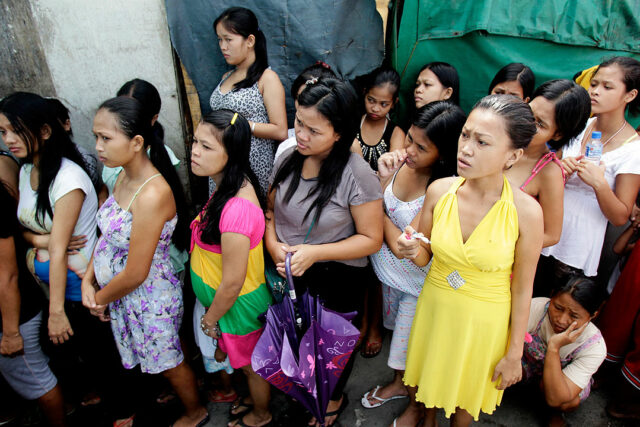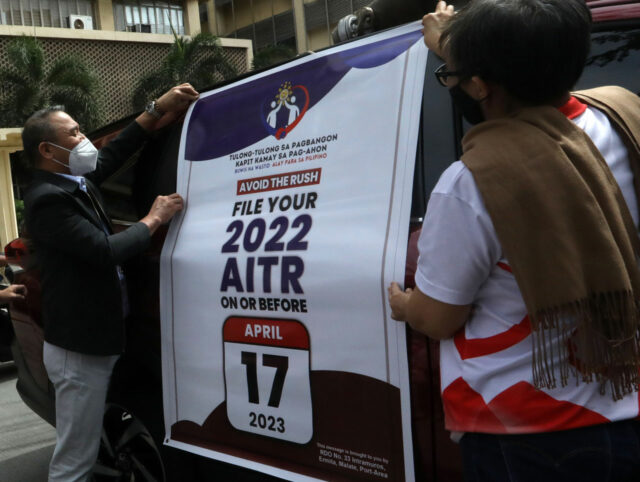Pacific islanders head to Australia for jobs as climate fears grow
SYDNEY — Over the years, Claire Anterea has waved goodbye to numerous friends and family members as they left the Pacific island nation of Kiribati for jobs in regional powerhouse Australia. She had never considered joining them – until now.
Australia will introduce a permanent residency option for Pacific islanders this year, and has also expanded its short-term labor program – part of the country’s wider efforts to counter China’s growing influence in the region.
Anterea, 43, a climate activist, said the residency offer had led her to consider a permanent move to Australia as she grows increasingly concerned about her country’s long-term future due to rising seas caused by climate change.
“If our people are affected by sea level rise, we don’t have a place to go,” Anterea told the Thomson Reuters Foundation by phone from her home in Kiribati’s capital, Tarawa.
“This life for me is good, but what about my daughter? For the sake of my child, I want to migrate and to get a job and contribute to a new home,” she added.
Sea level rise could cover more than half of the low-lying Tarawa atoll’s land by 2100, threatening more than 60% of its population, according to the Intergovernmental Panel on Climate Change (IPCC).
While such forecasts raise the specter of a wave of climate migration in decades to come, for the meantime policymakers in island nations fear Australia’s efforts to court migrant workers could fuel a “brain drain” of skilled people.
Pacific workers can earn up to four times as much in Australia or New Zealand, said Richard Curtain, a leading Pacific labour mobility researcher.
That makes the offer of even temporary work an attractive prospect in countries like Fiji where youth unemployment surged to 37% in 2020, according to the Asian Development Bank (ADB).
SKILLED PROFESSIONALS
The mass departure of skilled professionals, especially digital workers, is a worrying trend, Fiji’s Deputy Prime Minister Manoa Kamikamica said earlier this month.
“This is a matter of great concern to our nation, as the loss of highly skilled professionals in the IT sector can have serious implications for our economic growth and competitiveness,” he told a conference.
Samoa’s industry and labour minister, Leatinu’u Faumuina Wayne So’oialo, voiced similar concerns in November.
Almost a quarter of Fiji’s population lived abroad in 2019, while about 12% of Samoa’s workforce participated in labour schemes in Australia or New Zealand last year, according to an ADB report in December.
Many are highly qualified workers seeking better job opportunities overseas, posing a problem for small island countries that have been struggling for years to retain a skilled workforce, said Curtain, who has researched brain drain in the Pacific region at the Australian National University.
Remittance payments sent home from migrant workers on the short-term Pacific Australia Labour Mobility (PALM) scheme are the upside, he added.
Some 35,000 Pacific migrant workers on the PALM program – many of them seasonal laborers such as fruit pickers – sent more than $64 million in remittances to the region last year, according to Australian government figures.
In both Tonga and Samoa, remittances were the equivalent of about 40% of each country’s gross domestic product (GDP) in 2022, ADB research showed.
Australia’s Department of Foreign Affairs and Trade (DFAT), which runs the PALM scheme, said workers gain experience, skills and savings that can help boost the economy of their home countries.
“We do not want to deprive the Pacific of its workforce and will ensure the scheme delivers a skills dividend for our region,” a DFAT spokesperson said in emailed comments.
CLIMATE MIGRATION PATHWAY?
Aiming to “strengthen Australia’s ties with the Pacific family”, the new Labor government pledged in 2022 to increase PALM workers to 35,000 by June, a target already hit, and launch a ballot for the new Pacific Engagement Visa (PEV) in July to let 3,000 Pacific Islanders become permanent residents annually.
Like New Zealand’s visa ballot, which was introduced in 2002, Australia’s PEV will only be open to Pacific Islanders with a formal job offer in Australia.
Some experts say the PEV program should also be treated as a climate migration pathway, with priority given to people from the most vulnerable island nations such as Kiribati and Tuvalu.
“This is quite urgent. We see Australia as the leader in our Pacific region so they should focus on improving the pathways for our people in climate-threatened communities,” said Akka Rimon, who was Kiribati’s foreign affairs secretary in 2013 and researches labour migration and climate displacement at the Australian National University.
The DFAT spokesperson said the government would prioritize “countries with limited permanent migration opportunities to Australia”, and the number of visas available for each Pacific island was still being determined.
Without serious and rapid action to tackle climate change, about 216 million people globally could be forced to move within their own countries by 2050, according to the World Bank.
But for people from small, low-lying island nations relocating overseas may be their only option.
For islanders like Anterea, such concerns mean moving abroad sooner – rather than later – appears increasingly tempting.
“People are really fighting to get their opportunity to go and work overseas because it’s a good income. They are thinking about the future of their children. They want their family to have a better life,” she said. — Reuters









 The Philippines is estimated to lose P33 billion a year due to adolescent pregnancy, which the Philippine government considers a national priority, she told a news briefing. Foregone income of teenage girls who get pregnant is P83,000 a year.
The Philippines is estimated to lose P33 billion a year due to adolescent pregnancy, which the Philippine government considers a national priority, she told a news briefing. Foregone income of teenage girls who get pregnant is P83,000 a year.



